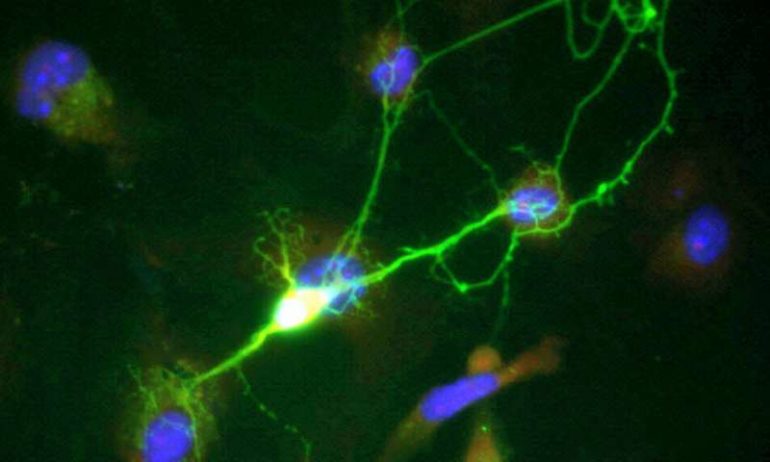Meaningful social interactions are critical to an individual’s well-being, and such interactions rely on people’s behaviors towards one another. In research published in Science, investigators at Massachusetts General Hospital (MGH) have mapped the neurons in the brain that allow a monkey to process and remember the interactions and behaviors of another monkey to influence the animal’s own actions. The findings might be used to develop treatment strategies for people with neuropsychiatric conditions.
The study had three rhesus monkeys sit around a rotary table and take turns to offer an apple slice to one of the other two monkeys. At the same time, the researchers recorded the activity of individual neurons in a brain area known to play a role in social cognition, called the dorsomedial prefrontal cortex (dmPFC).
During these interactions, the monkeys reciprocated past offers of an apple slice and retaliated when they did not receive a slice from another. The researchers’ recordings identified distinct neurons in the dmPFC that responded to the actions of other monkeys in the group. Certain neurons were activated with a particular action and outcome of specific individuals within the group (such as a neighbor monkey offering an apple slice leads to the outcome of receiving the reward). Many of the neurons encoded information not only about the actions and outcomes of specific individuals but also about their past behavior. This information about past interactions with group members influenced an animal’s upcoming decisions to reciprocate or retaliate, and investigators could use the neuronal information to predict which monkey would receive an apple slice from a particular monkey even before it was offered.
“This finding suggested that the dmPFC plays a role in strategic decisions. To test this idea, we disrupted the normal activity in this area and found that the animals were less likely to reciprocate,” says lead author Raymundo Báez-Mendoza, Ph.D., an investigator in the Department of Neurosurgery at MGH.
The results suggest that the dmPFC plays an important role in mapping out our actions and outcomes as well as the actions of others. “In neuropsychiatric conditions in which this ability is compromised, treatments aimed at improving the functioning of this brain area, either directly or indirectly, might improve peoples’ lives,” says senior author Ziv Williams, MD.
Co-authors include Emma P. Mastrobattista, and Amy J. Wang, MD.
I won’t have what he’s having: The brain and socially motivated behavior
More information:
Raymundo Báez-Mendoza et al, Social Agent Identity Cells in the Prefrontal Cortex of Interacting Groups of Primates, Science (2021). DOI: 10.1126/science.abb4149.
Provided by
Massachusetts General Hospital
Citation:
Researchers map neurons in the brain involved with social interactions with others in groups (2021, October 21)
retrieved 22 October 2021
from https://medicalxpress.com/news/2021-10-neurons-brain-involved-social-interactions.html
This document is subject to copyright. Apart from any fair dealing for the purpose of private study or research, no
part may be reproduced without the written permission. The content is provided for information purposes only.



